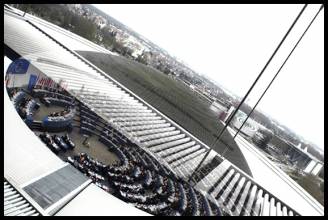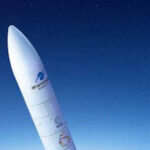Very occasionally, history repeats itself, in oddly nuanced ways. I stand today at such a juncture. Nineteen years ago Glen Gibbons, the founder of this magazine, hired me as his lieutenant for another satnav publication—for which he was also the founding editor. I possessed a hastily acquired basic knowledge of GPS, and I could recognize the words GLONASS and Galileo. The former was the only other GNSS actually flying at that time, while the latter, though much discussed, would not rise into orbit for five and a half years. BeiDou did not yet fully exist; its pathfinder, Compass, was just getting underway, launching a first satellite four months after my entry. Also on the scene in those halcyon days was Publisher Richard Fischer, heading the business development side of the operation in partnership with Glen.  Together the three of us witnessed and chronicled the steady modernization of GPS, the decline and gradual recovery of GLONASS, the often difficult birth of Galileo, and the rise of BeiDou. Under Richard and Glen’s visionary direction, we developed a “design and integration” beat of satnav journalism, reporting on the many combinations of GNSS with other positioning technologies—inertial, cellular, laser, LiDAR, Loran and more—that you, the community and industry, were rapidly advancing. Today I again follow Glen and rejoin Richard on the bridge of this newer, bolder enterprise, the good ship Inside GNSS. Ably assisted by a fresh crew—with the expertise of political correspondent Dee Ann Divis, also on the team back when— we explore the far reaches of the positioning, navigation and timing universe, the frontiers of knowledge that you are continually pushing outward. I am very happy, very lucky, and very excited to be onboard.
Together the three of us witnessed and chronicled the steady modernization of GPS, the decline and gradual recovery of GLONASS, the often difficult birth of Galileo, and the rise of BeiDou. Under Richard and Glen’s visionary direction, we developed a “design and integration” beat of satnav journalism, reporting on the many combinations of GNSS with other positioning technologies—inertial, cellular, laser, LiDAR, Loran and more—that you, the community and industry, were rapidly advancing. Today I again follow Glen and rejoin Richard on the bridge of this newer, bolder enterprise, the good ship Inside GNSS. Ably assisted by a fresh crew—with the expertise of political correspondent Dee Ann Divis, also on the team back when— we explore the far reaches of the positioning, navigation and timing universe, the frontiers of knowledge that you are continually pushing outward. I am very happy, very lucky, and very excited to be onboard.
The View from Here
Surveying the outer limits of our vision, how does today’s state of the PNT art manifest the trends that were developing two decades ago, and what new directions have emerged? GPS continues its steady, well-governed improvement, marked only by a few hiccups that have been quickly remedied or sidelined. It may not be the only precious metal in the game, but it remains the Gold Standard. The U.S. Air Force successfully launched the second GPS III satellite on August 22. GLONASS, revitalized, extends its reach and solidifies its base with not only a bolstered constellation but also an expanding network of reference stations, central processing facilities, uplink stations and terrestrial broadcast means. Galileo continues to take great innovative and engineering strides, and will soon achieve the full constellation that occasionally seemed impossibly out of reach in the first years of this century. The program also continues its other great tradition, that of hampering itself with difficulties of its own devising. This summer’s prolonged signal outage continues unexplained in satisfactory detail. One great development for which there is no precedent is the spectacular rise of BeiDou, which some view as destined to dominate GNSS of the future. If we were to judge by sheer numbers, the BeiDou constellation now counts 35 in space, while GPS weighs in at 31, GLONASS 24, Galileo 22, India 6 and Japan 4. A recent article in the Nikkei Asian Review noted ominously that “Chinese satellites were observed more frequently than GPS satellites in 130 of 195 countries” around the globe. We know what business journal staff writers do not: that geometry punches harder than numbers. Nevertheless, the article sounds several other alarming notes that, combined with news reported elsewhere, command attention and stimulate concern.
• The sheer size of the Chinese market for which BeiDou chips are governmentally mandated, combined with those national economies within the extensive Belt and Road Initiative that China is strenuously promoting, mean that BeiDou will eventually reside within every GNSS device. A new Gold Standard?
• A super-thin rubidium atomic clock, 76 x 76 x 17 millimeters, has entered mass production in China. Targeting aviation, aerospace and telecom applications, it could solidify BeiDou footholds in these markets and perhaps beget leadership.
• BeiDou differs from the other GNSS in having two-way communications capability. Users—cars, phones, whatever—could potentially be tracked.
Thinking Allowed
GNSS integrations with other technologies continue to multiply at a rapid pace. The ingenuity of engineers faced with a discontinuity problem knows no bounds. And hey, you know what else is back to burn from 2000? Ultra-wideband interference! Before Ligado/ Lightsquared, there was Time Domain Corp. Now Bosch has assumed the villain’s veil in our little drama, and satnav RF spectrum is again threatened. Nor has Ligado gone away. We’ll continue to monitor all these developments closely, guided by our expert advisors and friends in the community, our many contributors in research and development labs, and our keen political correspondents. We bridge the information gaps between industry and academia, research and practice, manufacturers and professional user communities. Our mission: reporting to you the most relevant, timely and actionable items. In Richard’s words, “we have got the band back together.” In your company, we are headed to infinity, and beyond.






